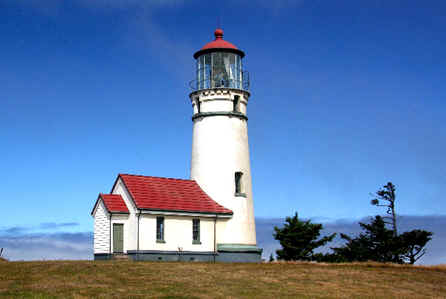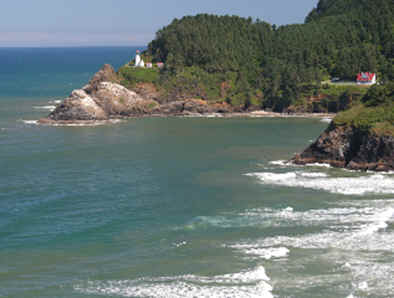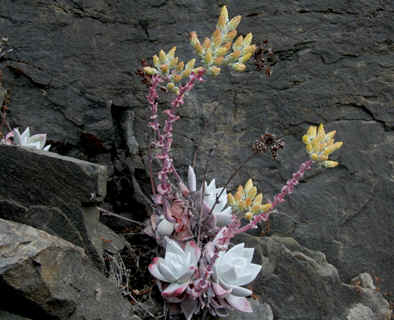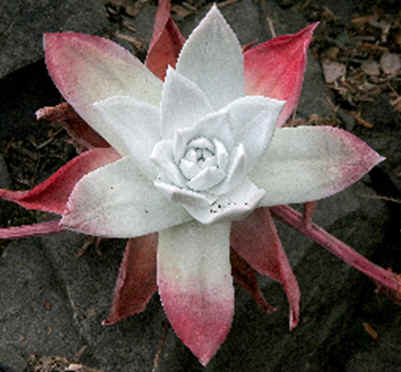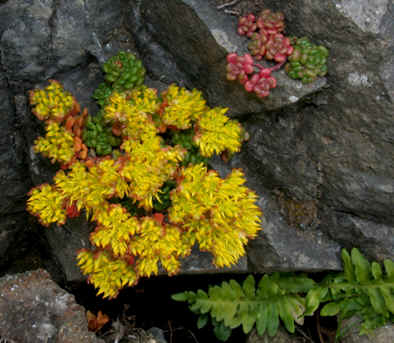|
Additional
notes from the Ed
Sedum
spathulifolium ‘Cape
Blanca’ - in the garden.
This
succulent is widely available in garden centres in the UK and is a great
‘alpine’ for the rock garden or front of the border. It is often
incorrectly named ‘Capa Blanca’ but Cape is correct. Its main
requirement is sunshine though I have seen plants scorched by long
droughts. This species is also available in a purple leaved form
generally called ‘Purpureum’, which is also an attractive plant.
Both
'Cape Blanco' and Purpureum' can be seen in the image (right) taken at
the Lake District Horticultural Society's garden. Sedum 'Angelina' is
the yellow plant near left.
In
winter ‘Cape Blanca’ looses its white farina and looks rather
‘Purpureum’. I used to grow a green leaved form, which was hardly
worth it, and the cultivar ‘Aureum’ which was a sickly yellow leaved
form. This last had a poor constitution and quickly expired in the
garden. I eventually lost my pot grown plants as well.
Sedum oregonum is
also available in garden centres and is of an easy constitution. Though
its brilliant shiny green leaves are quite attractive, in a dry
situation they will turn bright red.
|

